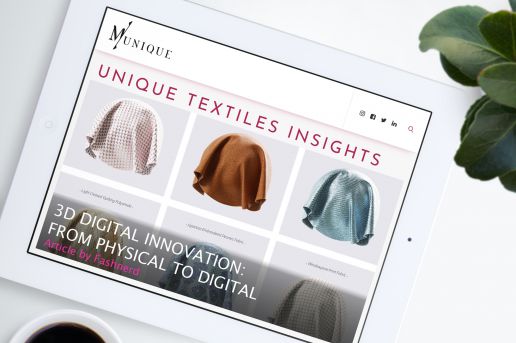Digital Tools
Inclusive Sizing Technology
Inclusive Sizing Technology, Helping the Fashion Industry Represent the Underserved
AN INDUSTRY INSIGHT BY FASHNERD FOUNDER MUCHANETA KAPFUNDE.
With as many unique sizes as there are people on the planet, does it make good business sense for the fashion industry to continue to mass-produce 3 or 4 standard sizes? Yes, it is cost-saving, but with the new wave of body positivity breaking the sizing mould of yesteryear, maybe the time has come to move with the times. It is a positive thing to see the movement forcing fashion brands and retailers to turn to technology to meet most body shape needs and offer more than just standard basic styles.
Sizing Technologies, Worth the Investment?
Inclusive sizing technology is nothing new. Several solutions have been trying to correct the distorted and outdated image-standard designed to exclude plus-size consumers for a while now. Most famously was the ZOZOSUIT, a skin-hugging, high-tech bodysuit created to help shoppers purchase clothes, guaranteed the perfect fit every time. Now fast forward to 2021, and although sizing technology has advanced even further, shoppers are still struggling with common-fit issues. This begs the question, can fit technology fix fashions biggest demons, sizing and fit?
According to Narvar Inc, size and fit are among the top reasons customers return online orders. The e-commerce software company believes that this obstacle “further erodes retailers’ already thin profit margins”. Although it is a complicated problem, sizing technologies that offer a solution are being communicated to fashion businesses. One of those is 3D technology.

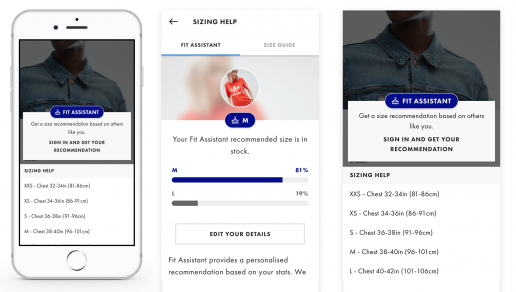
Revolutionising the fashion industry one label at a time, 3D technology is capable of helping fashion brands understand their consumer’s body shape so they can develop more accurate garments. One of those startups offering this type of innovation is CLO. On a mission to help the industry understand how ‘fit can build loyalty to a brand’, CLO 3D Simulation software feature allows brands to solve the question mark of their customer’s shape. Primarily built for cut-and-sew garments, CLO brags features like an API that enables customers to input their measurements to receive fit maps and view draped garments.
Fit Analytics is another solution. It is a technology that provides a “Fit Score” generated by response comparisons. CEO of Fit Analytics Sebastian Schulze believes that fashion brands cannot simply scale existing apparel specifications to create plus-size garments; they need fit technology to help them empower consumers and fix a decades-old problem.
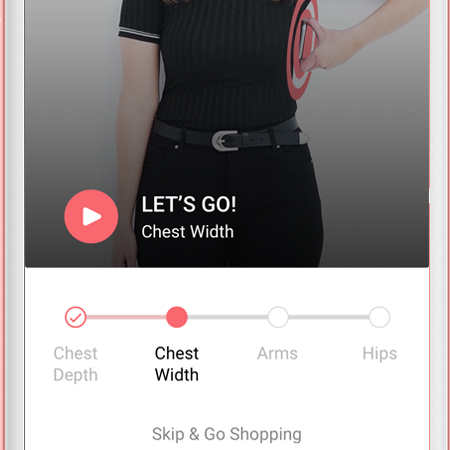
Also worthy of mention is the digital fit solution app MySizeID. The direct to retailer technology helps consumers assess a garment’s sizing. Denim brand Boyish Jeans partnered up with MySize and saw a reduction of more than 30 per cent in two months. How? Well, the app’s AI-driven technology works by analysing user-entered data, like weight, gender or height, and then MySize’s proprietary machine learning database calculates the appropriate size. On their technology, Ronen Luzon, MySize CEO and founder told Sourcing Journal:
“Our app was designed specifically to take the guesswork out of sizing and make things as convenient as possible for online shoppers, so enabling customers to utilise our sizing recommendations and navigate directly from our app to retailers’ sites is a natural step for us when it comes to working directly with the consumer”.
Looking ahead, MySize is hoping to offer the same solution it does to the apparel industry to the footwear industry.
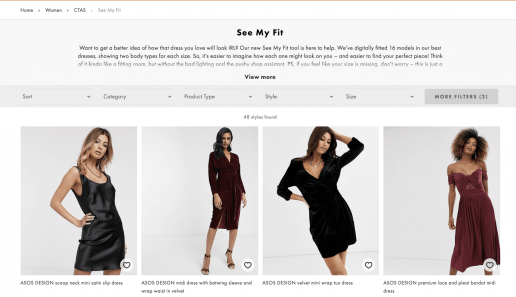
Yes, Fit Technology Has Gone Mainstream
When Lizzo, Ashley Graham and Meghan Trainor brought the inclusive sizing movement to the mainstream, fashion brands began to understand that they were walking away from profit by underserving a specific demographic. One of those brands was ASOS. Last year, in 2020, the British online fashion and cosmetic retailer trialed an augmented reality tool in collaboration with Israeli augmented reality (AR) company Zeekit to expand their offerings. “See My Fit” allowed ASOS customers to view 800 dresses on 16 different models, sizes 4 to 18, which heralding the online retailer as being at the forefront of fashion inclusivity. When released, Tim Carey, senior content manager at ASOS Studios, told NBC News:
“With this trial of See My Fit, we’re using the latest in AR technology to put the power in our customers’ hands, so they can choose to view a dress on the model that they most identify with, in a way that wouldn’t be possible using traditional model-shooting techniques.”

Then there is Vero Moda, a fashion brand that worked with Presize. It is a fit solution that can be integrated with zero IT capacity. After applying the technology to its online store, the fashion brand saw an increase in its online revenue.
When it comes to reliability, Presize states on their website that a study conducted with 255 participants found that the startup showed greater body measurement accuracy for 90% of all subjects and scored a mean average error 55% lower than that of the second most accurate solution in the benchmarking.
Empowering fashion brands to offer a more personalised sizing experience is ZyseMe, a Germany based startup driven by a desire never to allow customers to compromise on fit. It is a solution that has been successfully cutting overproduction, waste and returns. In 2021 they partnered up with H&M. Together, the two companies offered on-demand production of men’s shirts with H&M LAB. Using AI algorithms, they generated a unique pattern for a shirt produced on demand and sent directly to the consumer. ZyseMe is now expanding to partner with several other retailers and brands.
Finding The Perfect Fit, A Sign of Changing Times
Doesn’t it make good business sense for fashion brands in this challenging market to not alienate the next generation of consumers? Fit-related innovation has proved to be the best way to meet the demand for size “ideals’ that do not skew towards smaller products while also fighting the growing number of returns and unnecessary overproduction.
Yes, fit technology might not have cracked the code to the perfect fit, but you should believe the hype because as the technology evolves, it is coming closer to promising “perfection and personalisation” than ever before. Acknowledging the existence of inclusive sizing solutions is no longer enough; adopting, adapting and executing them is.
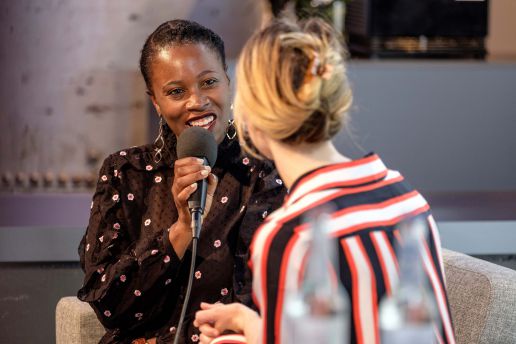
ABOUT THE AUTHOR
Founding editor-in-chief of FashNerd.com, Muchaneta has worked in the fashion industry for over 14 years. She is currently one of the leading influencers speaking and writing about the merger of fashion with technology and wearable technology.
Muchaneta Kapfunde | editor@fashnerd.com
Towards 3D Digital Innovation
3D Digital Innovation: Transitioning From Physical to Digital
AN INDUSTRY INSIGHT BY FASHNERD FOUNDER MUCHANETA KAPFUNDE.
As business practices in various sectors adjust to accommodate digital innovation, the textile industry has also started to shift direction. Driven by the growing need to rethink the industry’s approach to design, development and manufacturing, the textile business has finally started to turn to digital technology to help solve some of its industry-specific difficulties and complexities.
Under pressure to innovate, I am excited to witness 3D digitalisation finally taking centre stage in the textile industry. Propelled forward by the brand-new digital wave, textile businesses are setting new standards to future-proof the sector. Rethinking how they operate, more and more textile businesses are becoming less afraid to explore the benefits of transitioning from physical to digital. The majority are doing this by examining the advantages of merging textiles with digital experimentation. So, what exactly is 3D digital technology offering an industry notorious for being resistant to change?
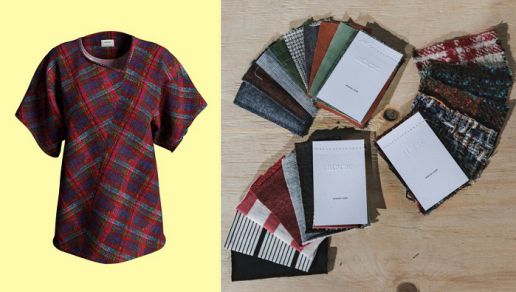
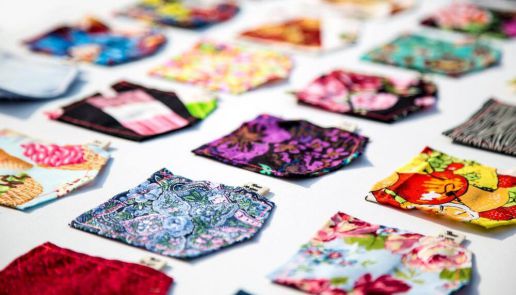
The Digitisation of Fabrics, A Powerful Asset?
Modern technologies are proving to be an influential asset when it comes to playing an integral part in changing the dynamics of the textile industry. With the potential to give textile businesses a competitive edge, we are starting to see 3D digital innovations being highlighted at textile trade shows, which, in my opinion, is a step in the right direction.
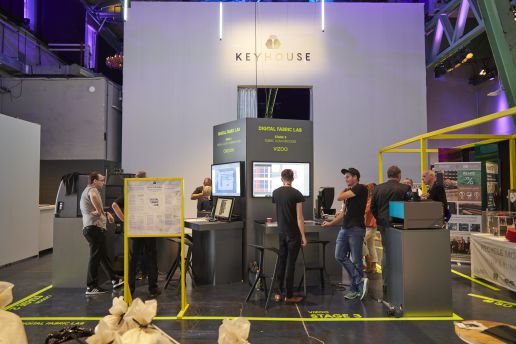
This is an opinion formed while frequenting various textile trade shows. As a regular visitor I am familiar with physical swatches. Now imagine if I, as a visitor (or customer), could access the digital twin of a piece of fabric along with its physical swatches. This concept was introduced at Munich Fabric Start (MFS) trade show during their 2019 edition of KEYHOUSE.
The Munich based trade show showcased fabric suppliers offering a digital twin alongside physical swatches. Partnering up with Digital Fabric Lab, they demonstrated the individual steps of fabric digitisation and how textile businesses can create a realistic image of digital fabric samples. The key takeaway was that physical no longer needs to be the master copy. More recently, in 2021, MFS invited attendees to indulge in 3D digital fabrics and trend inspirations showcased at their DIGITAL TREND SPACE.
PHYSICAL NO LONGER NEEDS TO BE THE MASTER COPY
Another digital platform making it possible to digitise fabric is Esmetex. “We aim to simplify the fabric development process; no more looking through swatch boxes and shipping swatches back and forth“, said the founder of Esmetex, Victor Chao, to Apparelresources.com. Adding:
“It is not practical for a designer to search through 18,000 fabric swatches when Frontier® can search based on whatever criteria the user is interested in and return all relevant fabric information on one page. This can be done on a desktop, laptop, tablet or smartphone by accessing our website or by installing our app.”
Chao is not alone in trying to help the textile industry move with the times. Emily Croneberger, manager marketing and industry programs, Cotton Inc, said in an interview:
“Digitising the fabrics is our first step in keeping cotton in a digital landscape”. She continued: “We have committed to creating an online digital library of our fabrics, free for download and use by brands, mills and accounts. We plan to move forward in promoting and expanding our digital assets.”
Although it is unlikely that physical samples will become a thing of the past anytime soon, the digital twin of fabric offers some advantages, like storing all fabric data in one central place. It is also worth taking note that solutions offered by digital material platforms like Swatchbook, also make it easier to verify the physical textiles’ authentication. For those attending shows, this type of tech solution makes viewing the fabrics more effortless while helping textile businesses be less wasteful when it comes to physical material samples and swatches.
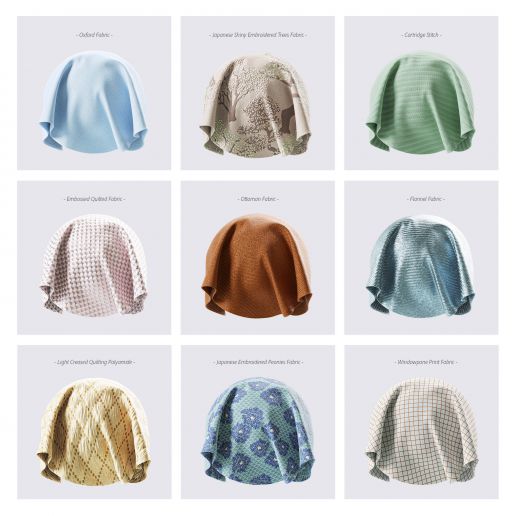
The Wonder Of Digitally Transformed Fabric
As industries transform to meet global changes, we have seen a rise in the adoption of newly emerging technologies. It is these genius ideas that have allowed the textile industry to take material digitisation to the next level. By hybridising the physical world with the digital one, textile companies that once relied on physical meetings at trade shows are now turning to innovative textile technologies to help them digitally transform their fabric during the global pandemic. One of these solutions is Scanatic™ Nuno Fabric Scanner provided by tg3ds.
Digitally powering the textile industry, the tg3ds studio uses an intelligent imagery processing engine to capture 3D texture display properties of fabrics in the smallest digital footprints. Another solution provider is Twinbru. They have made a name for themselves by setting an industry standard when it comes to making it possible for digital fabrics to be used in all virtual settings, like AR, VR and even game design.
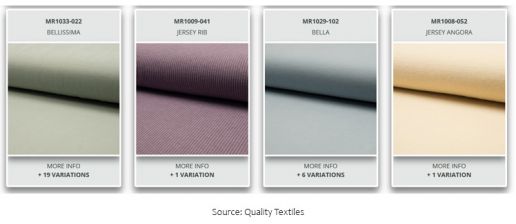
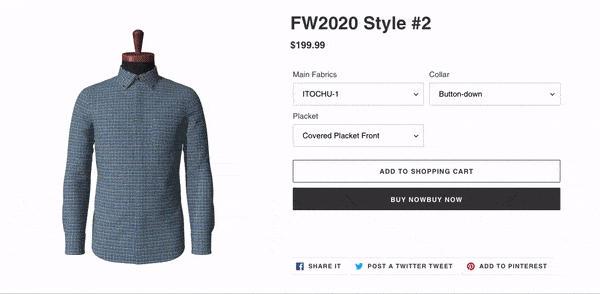
Ready for Limitless Possibilities?
When the world of “all things digital” merges with one of the oldest industries, you know it’s time to stand up and take notice. If you are a fabric mill, a garment manufacturer, or a textile brand, now is the time to leave outdated methods behind and transition your product from physical to digital. For example with help from companies like CLO Virtual Fashion, who can accurately emulate drape-sensitive fabrics such as lightweight wovens and jerseys with various material properties, more on this here. Yes, there are still imperfect kinks to the technology, like not being able to mimic complex behaviour of materials, but that does not make innovations like 3D Digital plan B; it should always be ‘the plan’.
So why embrace digital transformation? If you want to become faster, more relevant and more cost-efficient, now is the time to capitalise on all the possibilities that digitalisation offers. Yes, some might argue that the technology is not industry-ready enough to replace physical samples with virtual ones, but we can all agree that a new textiles economy is arising, and it makes sense to be a part of it.

ABOUT THE AUTHOR
Founding editor-in-chief of FashNerd.com, Muchaneta has worked in the fashion industry for over 14 years. She is currently one of the leading influencers speaking and writing about the merger of fashion with technology and wearable technology.
Muchaneta Kapfunde | editor@fashnerd.com
The Power of Headless Commerce
Why Fashion Businesses Should Harness the Power of Headless Commerce
ARTICLE BY MUCHANETA KAPFUNDE, FOUNDING EDITOR-IN-CHIEF FASHNERD.COM
In today’s world, it is hard for any industry to ignore the explosion of innovation, let alone the growth of its adoption. Even the fashion industry, which has always been hesitant to invest, started in 2020 to seriously take note when it became apparent that the fashion industry’s overall health was now reliant on its ability to adapt to new ways of doing business. Switching to survival mode, brands and retailers, especially those who have been dealt a tough hand due to the pandemic, started diving into innovations designed to get them back on track. One of these best-in-class technologies is headless commerce.
Born from what RetailDive described as “retailers’ struggle to create an online purchasing experience that was consistent with the slick marketing customers were used to seeing”, headless commerce has been proving to be more than just another buzzword. Although it has been acknowledged by luxury labels like Lancome and Michael Kors, who are using the solution to run their eCommerce stores, the question remains, what is headless commerce?
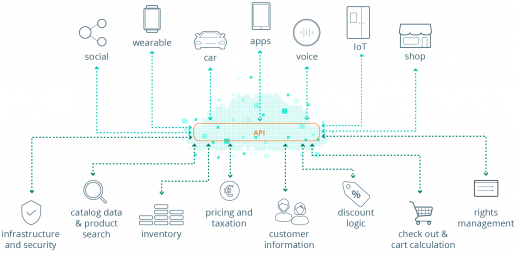
The Rise of Headless Commerce
For some businesses, it was the enforced disruption of 2020 that brought headless commerce to their attention. If you are hoping to take advantage of what headless commerce can bring to the table, you need first to understand what the solution is. The idea behind Headless is pretty simple. It is the decoupling of the front-end and the back-end of a brand’s e-commerce solution. The front-end is what your customers see when they are interacting with your store. The back-end, which is responsible for all of the functionality, is what the customer never sees.
Now, most e-commerce solutions have their back-end and front-end coupled, which means that any changes requiring a developer to configure code to account for those changes – turning a small project into a big one; and this is when headless commerce comes in. Shaneil Lafayette, Commerce Technology Advocate and Data Analyst, explains: “Headless commerce is a solution that allows you to innovate and add new customer touchpoints without ever having to worry about messing about functionality in expectations”. Adding: “You can add new and personalised commerce experiences to keep up with customer expectations”.
Not an entirely new approach, Nacelle, a company that helps businesses create next-gen web stores by offering headless functionality as a solution, defines headless commerce as an innovation that allows retailers to scale their e-commerce business. More technically, headless commerce is “the decoupling of a website’s front-end from the back-end and implementing an API architecture that enables making fluid changes to the site’s content and user interface elements without affecting the back-end”, according to Algolia, a search-as-a-service platform.
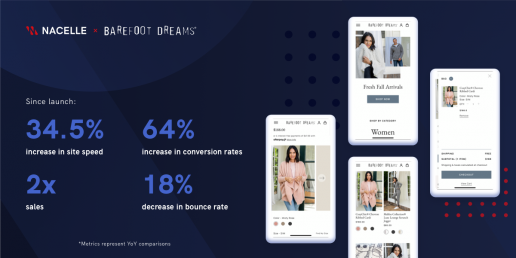
Although brands like Oliver Bonas, Etsy, J.Crew, and ASOS are adopting headless solutions, some brands and retailers are still trying to understand why this ‘future-proof’ package is on the rise. One argument offered by ‘Content And Commerce: The Odd Couple Or The Power Couple?’ authors Stephen Powers and Peter Sheldon is: “It is no longer enough to enable an online catalogue and transactional e-commerce.” A valid point. So taking it one step at a time, to understand why headless is on the rise, I think one needs first to understand the difference between traditional commerce and headless commerce.
Traditional Versus Headless
Before pointing out the difference between traditional or headless, allow me first to say, although headless commerce has its advantages, traditional e-commerce website solutions are always great for those starting or those looking for an easy setup that requires less financial investment. But if you are past that stage and want to take the next step, then headless commerce could be the progressive solution that makes it easier for your business to present experiences and test new strategies.
Let’s start with the front-end. It has been said that when it comes to the front-end, traditional commerce platforms have a reputation for having design constraints that limit developers. This hindrance is usually not experienced in headless commerce. That is not to say that headless commerce doesn’t come with its drawbacks, it does, but with perks that include advantages that enable front-end developers to create, from scratch, a user experience that fits core business needs, the benefits currently outweigh its limitations.
When it comes to customisation, the traditional commerce platform affords limited personalisation, while headless platforms offer developers the opportunity to create their own user experience. By this, I mean that headless commerce is built for customisation, which means that it is a solution that makes it easier for you to rearrange your store or change content as and when you need to.
Ready To Be Free From Traditional Shackles?
Joe Cicman, a Forrester Senior Analyst, once said: “If you rewind the clock to the pre-headless days, you could spend millions of dollars figuring this stuff out for yourself”. The good news is that experts at Amplience have come up with a playbook that offers fashion businesses an opportunity to break down traditional barriers. Supporting headless commerce as an innovative solution, Amplience’s playbook explains the whys, what’s, and how to go headless.
Still wondering if you should get in on the action? Let’s go through some advantages of adopting this modern commerce architecture. It is a solution that gives you the ability to deploy, scale and provide an accurate omnichannel approach. As Harvard Business Review research revealed, this is important because omnichannel customers spend 4% more in-store and 10% more online than single-channel customers. Also that 73% of consumers use more than one channel during their shopping journey.
Another advantage of going down the headless route is the faster speed to market aspect, a must in an industry that thrives on speed and agility. Also, headless commerce can help brands adapt quickly to market changes and implement recent UX changes, like adding new functionality without changing the back-end logic.
Lastly, the most significant advantage has to be headless commerce’s ability to make it possible to build a store that is tailored to a fashion business’ needs. Imagine being able to create an all-in-one-platform that is not a clunky and outdated operation but a seamless system that ticks all your boxes and allows your customers to experience your brand’s overall aesthetic with ease.
Let's Talk Challenges & Whether Headless Is a Best-of-Breed Solution for You
Considering some experts to be a long-overdue upgrade, should you decide to join the headless tribe, you won’t be alone. As I mentioned earlier, Michael Kors shifted to a headless architecture in 2016. The benefits for the American fashion label include streamlining their efforts to engage with mobile users. Also, in 2016 French luxury perfumes and cosmetics house Lancôme transitioned to headless to capitalise on its increased mobile traffic. Following their evolution, Lancôme reported a 36% lift in mobile revenue and an average order value increase of 11%.
Like any emerging innovation, headless commerce comes with limitations. Not a quick solution for every retailer, headless commerce’s initial build costs and times can be relatively high, not to mention the ongoing costs. This is probably why larger organisations have mainly adopted headless commerce with the resources to commit to it. Some smaller businesses have taken a step towards going headless because, in the long run, they are looking at the bigger picture and thinking long term when it comes to their expectations of ROI.
In the end, yes, headless unlocks opportunities, but it is not suitable for everyone. It is a solution that offers excellent benefits if you are looking to bring specific traits to your overall business approach. Still, before you commit, you need to ask yourself, do I want to increase conversions? With mobile-first on the rise, is now the time to optimise my store for mobile shopping experiences? Are modern tools the way forward for my business? If you answered yes to all three questions, then headless could be the solution to help you to scale up and grow faster. Solutions like Mobify, Prismic, Algolia, Magento 2, Shopify Plus and Core DNA could help you make the switch in gradual increments.
So as we propel towards a new retail age in 2021, the fashion industry has started to realise that the road back to “normality” is paved with complex and sometimes intimidating innovation. Joining the dots between digital and physical not only opens the industry to viable solutions that reduce the impact caused by COVID-19, but it is technologies like headless commerce that will help fashion brands and retailers grab a more significant piece of valuable market share that will allow them to thrive post-pandemic.

ABOUT THE AUTHOR
Founding editor-in-chief of FashNerd.com, Muchaneta has worked in the fashion industry for over 14 years. She is currently one of the leading influencers speaking and writing about the merger of fashion with technology and wearable technology.
Muchaneta Kapfunde | editor@fashnerd.com



